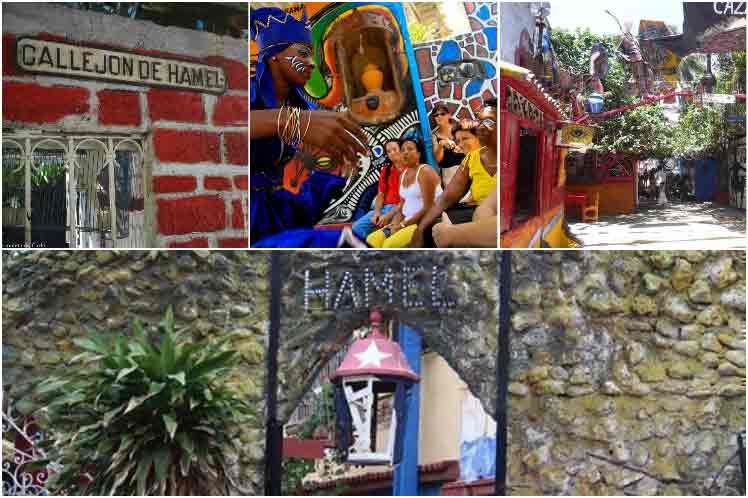
The Callejon de Hamel (The Alley of Hamel) is part of Cuban traditions and it is visited by many visitors from all over the world.
Cosmopolitan and animated, with African dances every Sunday at noon, the description of Callejon de Hamel, a perennial Cuban festival for those who love joy, can be simple and complex.
It is a place known for Santeria or Rule of Ocha, which was brought to Cuban in the 16th century by African slaves forced to work by the Spanish colonizers.
However, Callejon de Hamel, located on Aramburu Street and Hospital Street, in Centro Habana municipality, is much more than what can be seen at a first glance. This is a community cultural project founded by the Cuban painter Salvador Gonzalez.
Paintings, and religious and national symbols decorate the buildings and houses along Callejon de Hamel. Its colors are reflected in gates, railings, façades and even the doors some houses. Santeria is a fusion of beliefs that include Catholicism and Africanism elements.
These factors are intertwined in Callejon de Hamel, which bears the name of the French-German wealthy trader Fernando Belleau Hamel, who smuggled weapons during the American Civil War and settled there later.
However, its value was highlighted in 1990, when Salvador’s initiative began, and he engaged active collaborators to develop that idea.
At the time, all walls were decorated with paintings, very interesting murals that immediately made the place a point of reference for visitors.
Small workshops, art galleries and altars on three African religions were established: Santeria, Palo Monte and Abakua rituals.
Harry Belafonte and Sidney Pollack, from the United States, and the late Cuban singer Francisco Repilado, known worldwide as Compay Segundo, were among its illustrious visitors.
Callejon de Hamel, in Cayo Hueso district, is one of the most humble and well-known places in Havana.
Salvador painted murals covering the entire height and width of the houses, buildings and water tanks, in addition to expanding his art to other nearby squares.
The place was transformed from a secluded place to a site for culture, a true and everlasting art gallery.
The predominance of vivid colors such as red, and the cubist, surrealist and expressionist styles cover houses and buildings.
The holding of cultural events, all of them related to the themes shown in the place, began in 1993.
This is a truly unique space, which has been photographed by travelers who visit Cuba as tourists or executives eager to learn more about the country’s indigenous culture. (Taken from Prensa Latina)